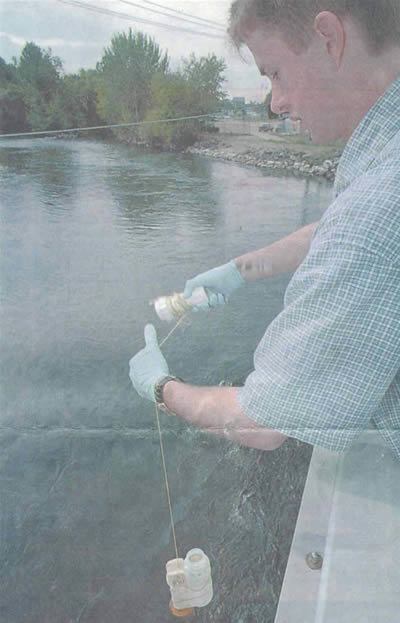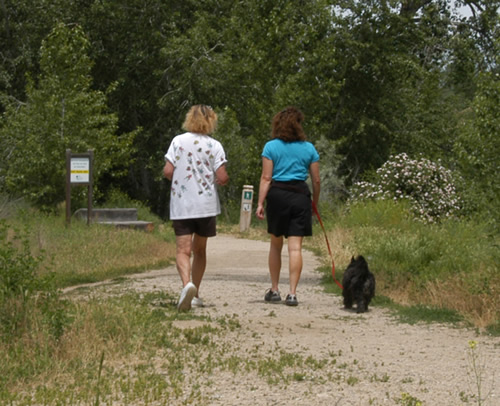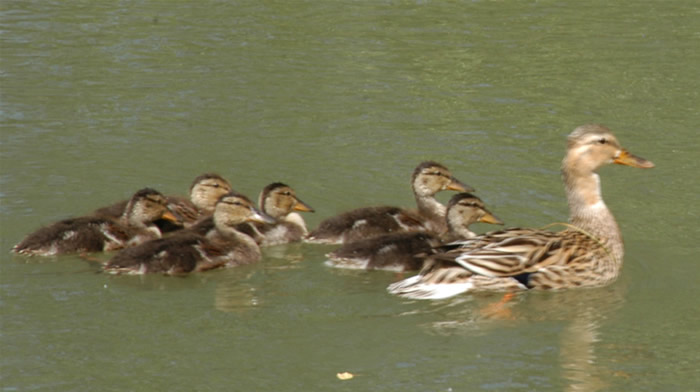 |
|||||||
|
DNA Fingerprinting Study of Lower Boise River Fecal Coliform Bacteria Sources
Pet waste accounts for 22 percent of the total identifiable bacteria in the Lower Boise River watershed |
In the past, determining the source of bacterial contamination in the lower Boise River watershed was a point of disagreement among the stakeholders. Until recently, sampling only revealed the presence of fecal coliform, but offered no clue about the source, which led to finger pointing and blame. The purpose of this study was to use DNA fingerprinting technology to identify the actual sources of fecal coliform in the lower Boise River. This will, in turn, show us how best to target our implementation plan and bacteria reduction efforts to meet the lower Boise River TMDL. See our Frequently Asked Questions to learn more about the study. The results of the lower Boise River study indicate that of the total number of isolated E. coli colonies (1,564), a bacteria source for 1,079 (69 percent) was able to be positively identified. Although the absolute numbers of unidentified sources vary by location depending on how many total samples were collected, unidentifiable colonies consistently occur throughout the watershed. The results indicate that human sources comprise 17 percent of total identifiable bacteria throughout the watershed. The other 83 percent is made up of pets (22 percent), avian and waterfowl (35 percent), wildlife (15 percent), and livestock (11 percent). |
|
Avian and waterfowl waste accounts for 35 percent of the total identifiable bacteria in the Lower Boise River watershed |
Final DNA Fingerprinting Study
To view the final DNA fingerprinting study, you must have Adobe Acrobat Reader version 4.0 or higher. This program is available for free from Adobe Acrobat.
If you have comments, please provide them to Tom Dupuis or Sherrill Doran. The report has been saved to one file, with the sampling plans in Appendix A saved to three separate files to reduce download time:
- Final DNA Report (PDF, 1 MB)
- DNA Report Sampling Plan Appendix A:
This report was posted on October 23, 2003.
| How Well Does this Technology Work? | |
| Where were Samples Collected? | |
| How was the Testing Conducted? | |
| Is this Approach Supported in Our Watershed? |
How Well Does this Technology Work?
The University of Washington (UW), who leads the field in this technology, conducted our study for the Lower Boise River. Although bacteria sourcing studies vary in the amount of detail provided, the DNA method used for this study breaks down source types in more detail than many other methods available. Part of the methodology rests on the assumption that if a study isolate does not match a “fingerprint” from the DNA library for a specific species (for example, to markers that have only been seen in deer scat samples), then it is more appropriate to match the study isolate to the broader library marker (for example, to the “deer/elk” category where the marker has been observed in both types of animals and cannot be distinguished between the two species). This approach inherently increases the accuracy of the match because the laboratory is not guessing as to whether the study isolate should be identified as either a deer or an elk. In addition, these study results represent a relatively high level of accuracy and certainty because if a 100 percent match is not possible, then no source is identified.
Where were the Samples Collected?
The samples were collected from two tributary and two mainstem river sites:
- Dixie Slough near the mouth
- Indian Creek at the Riverside Canal Diversion
- Boise River at the Glenwood Bridge
- Boise River near Parma
In addition, the Idaho Division of Environmental Quality (DEQ) and Ada County Highway District (ACHD) sampled other drains near Eagle and several stormwater discharges within the Boise metropolitan area.
How was the Testing Conducted?
First, a database of local fecal DNA was assembled. E. coli cultures were grown from the fecal samples of cows, sheep, humans, ducks, and geese, and the DNA from these samples were identified. Next, grab samples were taken of river water from the sample sites, as shown in this photograph published in the Idaho Statesman on May 17, 2000. These samples were sent to UW for analysis. The fecal coliform was removed from the water sample and the DNA isolated and identified. This DNA was matched to the DNA "fingerprints" to identify the source. More information about the testing procedure is provided in a October/November 1997 article (PDF file, 353 KB) from CTIC Partners, a publication of the Conservation Technology Information Center. |
 |
Photo by Tom Shanahan, The Idaho Statesman "Matt Leslie, a junior civil engineering student at Boise State University, pulls in a water sample at the Glenwood Street Bridge. Water samples from four locations along the Boise River from Boise to Parma have been taken once a week for the past month to analyze the DNA content of pollutants and bacteria. The work is being done as part of an effort to set guidelines for cleaning up the river by reducing the bacteria levels in the water." |
Is This Approach Supported in Our Watershed?
DNA fingerprinting has a wide basis of support among Lower Boise River stakeholders. In 1998, Dr. Greg Nelson, Director of Public Affairs for the Idaho Farm Bureau Federation, wrote a supportive article for the Voice of Idaho Agriculture. Dr. Nelson listed the wide range of e-coli contributing suspects -- from farm animals, to pets, to wildlife -- and said, "Instead of speculating and casting stones at each other, let's find the source of the contamination, and at that point we can apply TMDLs to clean it up."
This approach is also supported by Boise City's Division of Environmental Quality. In their letter of support for the 319 Grant that made the testing possible, Robbin Finch said, "To date, LBRWQP has been able to determine bacteria criteria are exceeded in the lower portions of the watershed but has not been able to determine the source of the bacteria with a high level of confidence (e.g., agriculture, waterfowl, leaky septic systems, wastewater facilities). Use of this new technology would focus the implementation plan on the primary or most significant sources."
Many other agencies and Lower Boise River municipalities support DNA fingerprinting. Some of these groups include the Idaho Soil Conservation Commission, the Canyon and Ada Soil Conservation Districts, Southwest District Health Department, Ada County Highway District, Rural Community Assistance Corporation, several irrigation districts, and the cities of Boise, Caldwell, Eagle, Meridian, and Middleton.

